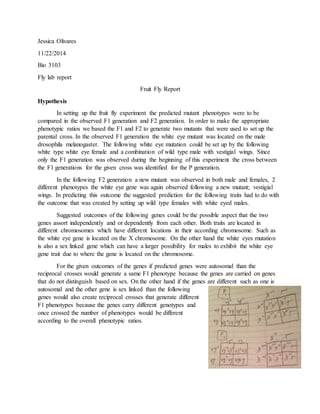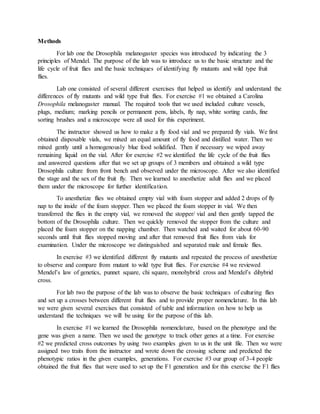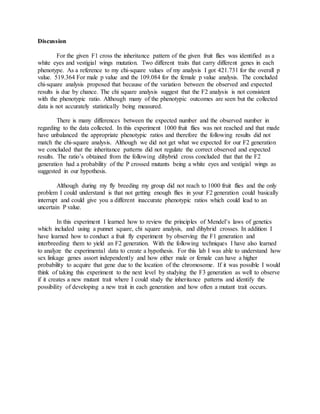- The student conducted a fruit fly experiment to observe inheritance patterns of mutants in the F1 and F2 generations.
- In the F1 generation, 4 males exhibited the white eye mutation. The F2 generation showed wild type, white eye, vestigial wing, and combined mutants.
- Chi-square analysis found differences between observed and expected phenotypic ratios, suggesting the results did not match expectations likely due to not reaching the target number of flies.
- The experiment demonstrated Mendelian genetics and inheritance patterns but did not precisely match ratios likely due to insufficient sample size.





